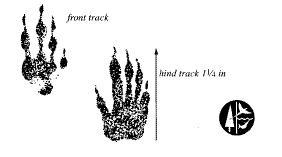Nebraska Game and Parks Commission

Nebraska Game and Parks Commission: Publications
Document Type
Article
Date of this Version
1978
Abstract
McConaughy Reservoir and the North Platte River drainage upstream to the Nebraska-Wyoming state line represent a major part of the coldwater habitat in Nebraska, 87%, according to the 1972 Nebraska Fish and Wildlife Plan (Figure 1). The plan also showed the upper North Platte River drainage contains 159 miles of coldwater stream habitat and 192 miles of mixed cold and warm water stream habitat, 29 percent of the total mileage in the state. Together, these 351 miles account for 80 percent of the coldwater stream acreage in Nebraska.
McConaughy Reservoir and the North Platte River drainage rainbow trout fishing attracts anglers from throughout Nebraska and adjoining states. McConaughy meets the requirements of a "two-story" reservoir as described by Kirkland and Bowling (1966). Beside the rainbow trout fishery, McConaughy provides excellent warmwater fishing for walleye, white bass, catfish, smallmouth and striped bass. The ecology and fishery management of the reservoir was described by McCarraher, Madsen and Thomas (1971).
The self-sustaining rainbow trout population there is recognized as unique in the Nebraska Colorado Great Plains region. The species propagates in tributary streams of the North Platte River, located approximately 60 to 100 miles above the reservoir. These spawning streams are vital to the rainbow population in the drainage and in the reservoir, since they provide the necessary spawning habitat to sustain natural reproduction.
Fishing for migratory rainbow trout in the North Platte River drainage began with the creation of Lake McConaughy in 1945, primarily in the Scottsbluff area streams, with most pressure coming from local anglers in the late 1940's. As the word spread this unique winter stream fishery attracted more and more fishermen from a wider area. Stream fishing pressure increased steadily into the early 1960's.
In the early years of impoundment rainbow fishing at McConaughy was done mainly from the bank during the early spring. Like the rainbow stream fishery, pressure was low and very localized during the early years of impoundment. Anglers didn't discover trolling was very productive until the early 1960's. Angling pressure on the reservoir increased drastically with the rise in popularity of trolling. The increased pressure on both the stream and lake rainbows plus a concern about stream and lake habitat, prompted the Game and Parks Commission to initiate rainbow trout investigations in the North Platte River drainage during the mid-1960's.
The study concentrated on collection of life history information and total utilization of the coldwater stream habitat through a specialized stocking program. Information from the results of this study are presented in the following management plan for Lake McConaughy and the upper North Platte River drainage. The management goal for this drainage is to produce the maximum number of rainbows over one pound for a quality lake and stream fishery.


Comments
Published in Nebraska Technical Series (1978) No. 2, 1-82